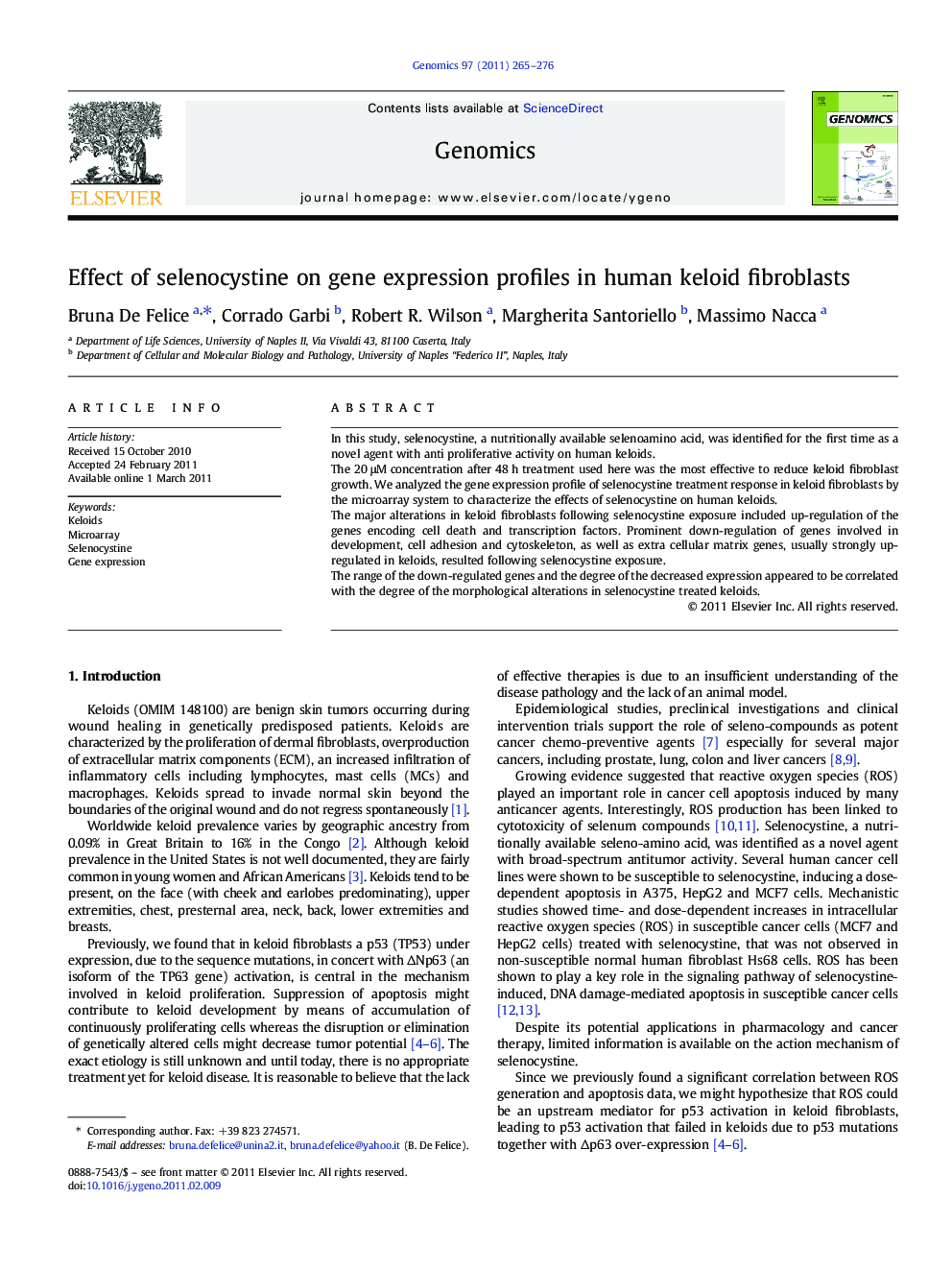| Article ID | Journal | Published Year | Pages | File Type |
|---|---|---|---|---|
| 2821063 | Genomics | 2011 | 12 Pages |
In this study, selenocystine, a nutritionally available selenoamino acid, was identified for the first time as a novel agent with anti proliferative activity on human keloids.The 20 μM concentration after 48 h treatment used here was the most effective to reduce keloid fibroblast growth. We analyzed the gene expression profile of selenocystine treatment response in keloid fibroblasts by the microarray system to characterize the effects of selenocystine on human keloids.The major alterations in keloid fibroblasts following selenocystine exposure included up-regulation of the genes encoding cell death and transcription factors. Prominent down-regulation of genes involved in development, cell adhesion and cytoskeleton, as well as extra cellular matrix genes, usually strongly up-regulated in keloids, resulted following selenocystine exposure.The range of the down-regulated genes and the degree of the decreased expression appeared to be correlated with the degree of the morphological alterations in selenocystine treated keloids.
